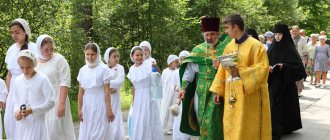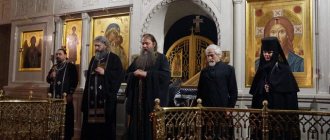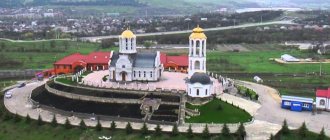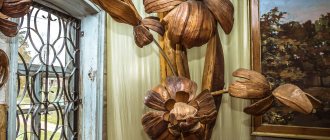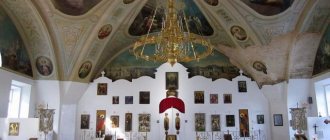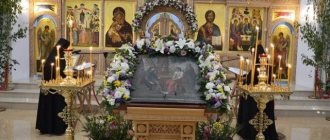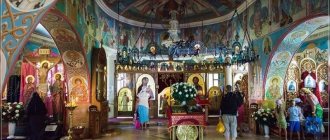Mir
Russia Vladimir region village of Makhra Trinity Stefano-Makhrishchi convent (Alexandrov) Map is loading…
{"format":"leaflet","minzoom":false,"maxzoom":false,"limit":50,"offset":0,"link":"all","sort":[""], "order":[],"headers":"show","mainlabel":"","intro":"","outro":"","searchlabel":"\u2026 \u0441\u043b\u0435\ u0434\u0443\u044e\u0449\u0438\u0435 \u0440\u0435\u0437\u0443\u043b\u044c\u0442\u0430\u0442\u044b","default":"","import-annotation":false,"width ":"auto","height":"350px","centre":{"text":"","title":"""link":"","lat":56.270499999999998408384271897375583648681640625,"lon": 38.68039999999999878355083637870848178863525390625,"icon":""},"title":"","label":"","icon":"","lines":[],"polygons":[],"circles":[ ],"rectangles":[],"copycoords":false,"static":false,"zoom":8,"defzoom":14,"layers":["OpenStreetMap"],"image layers":[] ,"overlays":[],"resizable":false,"fullscreen":true,"scrollwheelzoom":true,"cluster":false,"clustermaxzoom":9,"clusterzoomonclick":true,"clustermaxradius":80, "clusterspiderfy":true,"geojson":"","clicktarget":"","showtitle":true,"hidenamespace":false,"template":"","userparam":"","activeicon": "","pagelabel":false,"ajaxcoordproperty":"","ajaxquery":"","locations":[{"text":"\u003Cb\u003E\u003Ca href=\"/palomnik/%D0% A2%D1%80%D0%BE%D0%B8%D1%86%D0%BA%D0%B8%D0%B9_%D0%A1%D1%82%D0%B5%D1%84%D0%B0% D0%BD%D0%BE-%D0%9C%D0%B0%D1%85%D1%80%D0%B8%D1%89%D1%81%D0%BA%D0%B8%D0%B9_%D0 %B6%D0%B5%D0%BD%D1%81%D0%BA%D0%B8%D0%B9_%D0%BC%D0%BE%D0%BD%D0%B0%D1%81%D1%82 %D1%8B%D1%80%D1%8C_(%D0%90%D0%BB%D0%B5%D0%BA%D1%81%D0%B0%D0%BD%D0%B4%D1%80% D0%BE%D0%B2)\» title=\»\u0422\u0440\u043e\u0438\u0446\u043a\u0438\u0439 \u0421\u0442\u0435\u0444\u0430\u043d\u043e-\u041c\u0430\ u0445\u0440\u0438\u0449\u0441\u043a\u0438\u0439 \u0436\u0435\u043d\u0441\u043a\u0438\u0439 \u043c\u043e\u043d\u0430\u0441\u0 442\u044b\u0440\u044c (\u0410 \u043b\u0435\u043a\u0441\u0430\u043d\u0434\u0440\u043e\u0432)\»\u003E\u0422\u0440\u043e\u0438\u0446\u043a\u0438\u0439 \u042 1\u0442\u0435\u0444\ u0430\u043d\u043e-\u041c\u0430\u0445\u0440\u0438\u0449\u0441\u043a\u0438\u0439 \u0436\u0435\u043d\u0441\u043a\u0438\u0439 \u 043c\u043e\u043d\u0430\u0441 \u0442\u044b\u0440\u044c (\u0410\u043b\u0435\u043a\u0441\u0430\u043d\u0434\u0440\u043e\u0432)\u003C/a\u003E\u003C/b\u003E\u0 03Chr /\u003E\ u003Ca href=\"/palomnik/%D0%A1%D0%B2%D0%BE%D0%B9%D1%81%D1%82%D0%B2%D0%BE:%D0%90%D0%BD% D0%BD%D0%BE%D1%82%D0%B0%D1%86%D0%B8%D1%8F\" title=\"\u0421\u0432\u043e\u0439\u0441\u0442\u0432\u043e: \u0410\u043d\u043d\u043e\u0442\u0430\u0446\u0438\u044f\»\u003E\u0410\u043d\u043d\u043e\u0442\u0430\u0446\u0438\u044f\u003C/ a\u003E:\u041c\ 15 \u043a\u043 c\u043a\u044e\u0433\u0443\u043e \u0442 \u0410\u043b\u0435\u043a\u0441\u0430\u043d\u0434\u0440\u043e\u0432\u0430, \u0443 \u0431\u0435\u0440\u0435\u0433\u043 e\u0432\u0440. \u041c\u043e\u043b\u043e\u043a\u0447\u0438","title":"\u0422\u0440\u043e\u0438\u0446\u043a\u0438\u0439 \u0421\u0442\u0435\u0444\u 0430\u043d\ u043e-\u041c\u0430\u0445\u0440\u0438\u0449\u0441\u043a\u0438\u0439 \u0436\u0435\u043d\u0441\u043a\u0438\u0439 \u043c\u043e\u 043d\u0430\u0441\u0442\u044b \u0440\u044c (\u0410\u043b\u0435\u043a\u0441\u0430\u043d\u0434\u0440\u043e\u0432)”,”link”:”””lat”:56.27049999999999840838427189737 5583648681640625,"lon":38.68039999999999878355083637870848178863525390625," icon":""}],"imageLayers":[]}
56.269271; 38.677737
Russia, Vladimir region, Alexandrovsky district, village of Mahra
village of Mahra, Vladimir region
Russia
Temple in honor of St. Stephen of Makhrishchi
The monastery is located 15 km south of Aleksandrov, near the banks of the river. Molokchi.
History[[edit]h2>
Founded the monastery of St. Stefan Makhrishchsky. He was tonsured at the Kiev Pechersk Lavra, and left Kyiv along with many Pechersk brothers after 1339, when the Polish persecution of the Orthodox intensified. Refusing the offer of Moscow Prince John II to settle in any Moscow monastery, Stefan, in search of a deserted place, chose the Makhrishche tract. He cut down a cell, began to cultivate the land, and prayed in solitude. Stefan for a long time did not agree to accept monks and those wishing to become them. But over time he agreed. No later than 1358, with the blessing of Saint Alexy, the first temple was consecrated - in honor of the Holy Life-Giving Trinity. The charter of the Alexandrov monastery was sociable.
Stefan Makhrishchsky and Sergius of Radonezh visited each other more than once in their monasteries. When Rev. Sergius, running away from the envy of his brother, left the Trinity Monastery and went to the river. Kirzhach, on the way he came to the monastery of Stefan. Stefan and all the brethren came out to meet Sergius. The saints bowed to each other to the ground, asking each other for prayers and blessings; no one wanted to acknowledge their primacy, and only as a guest they managed to beg the saint. Sergius to bless the inhabitants of Makhrishchi.
Around 1370, due to disputes over land, local landowners threatened Stephen with death if he did not leave the deserts. The monk and his disciple went north and to the river. Sukhone founded the Trinity Avnezh Hermitage. Later, Stefan returned to his Makhrishchi monastery and reposed here in 1406. In 1550, his relics were found incorrupt, but miracles through the prayers of the saint began even earlier. The memory of the saint is celebrated on July 14 (27).
In 1557 Varlaam became abbot of the monastery; his great-grandfather was a monk of the Makhrishchi monastery, remembered St. Stefan and Sergius and told his great-grandson about them. In the first year of Varlaam's abbess, about 2,000 pilgrims gathered at the monastery for the feast of Pentecost. There was not such an amount of bread in the monastery, but Varlaam prayed to him at the tomb of Stefan - and there was enough bread, and there was still 3 months left in the monastery. Under Varlaam, the monastery reached its peak. He collected all available information about the life of Stephen and his miracles after death, which contributed to the glorification of the saint.
Varlaam resumed the Trinity Avnezh hermitage established by Stefan. In 1570, Abbot Varlaam was consecrated Bishop of Suzdal and Tarusa. In 1583, he returned to retire to the Makhrishchi Monastery in Alexandrov, where he soon died.
Under Ivan the Terrible and partly with his donations, a stone Trinity Cathedral with a chapel in honor of St. was built in the monastery in Alexandrov. Stefan. During the Time of Troubles the monastery was destroyed. Under the care of Metropolitan Platon of Moscow, who vacationed here almost every summer, it was rebuilt again in 1791-1808. Having closed the monastery, the communists destroyed the Trinity Cathedral and the Church of St. Stefan.
Story
The monastery was founded in the 14th century. Venerable Stefan Makhrishchsky, who arrived in Moscow from the Kiev Pechersk Lavra. The Holy Father was looking for a secluded place not far from the monastery of St. Sergius of Radonezh, whose friend and interlocutor he was. Having settled in a wretched cell, the Monk Stephen carried out his monastic labors in solitude. But residents of the surrounding villages came to share the life of a hermit with him. As a result, a monastery was founded near the Molokcha River and a church was built in the name of the Holy Life-Giving Trinity.
Although St. Stephen received a charter for the land and donations for the establishment of the monastery, the local peasants created many obstacles for him. Due to dissatisfaction, the holy father temporarily left the Makhrishchi monastery and went to the North, where he founded the Avnezh hermitage not far from Vologda. Dmitry Donskoy, having heard about the deeds of St. Stephen, invited him to Moscow for conversations. The Grand Duke granted land to the monasteries, and after that Stefan returned to the Makhrishchi monastery. The next abbot was Saint Varlaam. Under him, the brothers compiled the Life and Service of St. Stephen of Makhrishch.
Under Ivan the Terrible, the monastery received funds for the construction of a stone church of the Life-Giving Trinity. The relics of St. Stephen, discovered during construction, were left at the base of the temple. The main chapel was consecrated in 1558 in the presence of Tsar John and Tsarina Anastasia.
During the Time of Troubles, the Makhrishchi Monastery was devastated by Polish troops. There remained a small number of monks who were assigned to the Trinity-Sergius Lavra. Under Metropolitan Platon, the monastery was rebuilt: the Trinity Cathedral, the churches of Stephen of Makhrishchi and Sergius of Radonezh, and the Peter and Paul Church were restored.
In the 20s of the XX century. the monastery was completely destroyed. The authorities closed the monastery itself in 1922. The Trinity and St. Stefan, like the bell tower, was blown up in 1942. The remaining buildings housed in different years: an orphanage, warehouses, a pioneer camp, and an agricultural school. By the beginning of the 90s, on the site of the Trinity Church, under the cover of which were the relics of St. Stefan, there was a paved area.
The Holy Trinity Makhrishchi Monastery was revived as a monastery for women. The first nuns appeared here in 1993. Led by nun Elisaveta, the current abbess, they occupied a dilapidated building near the Church of Peter and Paul.
Three years later, archaeological research began. As a result, the foundation of the Church of St. Stephen and his grave were found. In 1997, the temple was restored.
The monastery was upset until 2010, when the Trinity Church was consecrated by His Holiness the Patriarch. In 2004, the monastery became stauropegial. Now more than 80 sisters serve in obedience at the Makhrishchi Monastery. The farm has a barnyard, a cheese factory, and a prosphora shop. The sisters also work in a sewing and icon-painting workshop.
Temple complex[[edit]h2>
Temple complex of the Stefano-Makhrishchi Monastery (1905)
Guide to the monastery.
- Trinity Cathedral (currently not restored)
- Bell tower
- Temple in honor of St. Stephen, Makhrishchi miracle worker
- Gate Church in the name of St. Sergius of Radonezh
- Temple of the Holy Chief Apostles Peter and Paul
- Temple of St. Sergius of Radonezh in the Makhrinskaya submonastic settlement (since 2010, Church of the Most Holy Trinity of the Holy Trinity Stefano-Makhrishchi Monastery)
- Monastery refectory
- Archpastoral Hotel
- Archimandrite Corps
- Hospice building
- Monastery Hotel (shelter)
Temples
The Church of St. Stephen of Makhrishchi was built under St. Varlaam, as the northern aisle of the wooden Church of the Life-Giving Trinity. Then a separate stone temple was built in the Russian-Byzantine style. Completely destroyed, the church in the name of St. Stephen was rebuilt in 1997, the first among all in the monastery.
The Church of the Life-Giving Trinity was the first among the monastic buildings, built during the reign of St. Stephen. The church underwent several reconstructions and complete destruction under Soviet rule. The current cathedral, consecrated in 2010, is a majestic single-domed church with a bell tower in the classicist style.
The Church of St. Sergius of Radonezh is the oldest building of the monastery and dates back to 1791. The temple was built above the eastern gate in honor of the meeting of Sergius of Radonezh with his spiritual friend Stefan Makhrishchsky.
The Church of St. Peter and Paul is a brick parish with an apse, built under Metropolitan Plato at the beginning of the 19th century. in honor of the chief apostles. The church escaped destruction, and the restoration of the monastery began from there.
Stefano-Makhrishchensky Monastery (Alexandrov)
From Aleksandrov you can go to three places :
1) 15 km north of the city is the Lukian Men’s Hermitage .
2) Not far away on the territory of a closed military camp (p/o Plekhany, near the town of Arsakov, in order to be allowed through the checkpoint you need to show your passport) - Zosimova men's hermitage .
3) And 15 km south of the city - Stefano-Makhrischensky Convent .
I equally wanted to see everything. But, I read all the information, and I was drawn to Mahra. The main reason is that Stefan Makhrischensky, a student of Sergius of Radonezh, chose this place and founded a monastery here. And for me the name Sergius is special.
I repeat once again that all monasteries are worth visiting. Lucian's Hermitage, now well restored, there is grace and silence. In the Zosima Hermitage in the Smolensk Church there are the relics of St. Zosima and Herman and the Smolensk Icon of the Mother of God, with a piece from her belt. And there is practically no information on the Internet about the Stefano-Makhrishchensky monastery. I miraculously found the website: www.stefmon.ru, and for some reason it seemed to me to be badly destroyed.
But this is an oasis of amenities. For some unknown reason, in our time, when lands near Moscow are being snapped up like hot cakes and are being built up with cottages, here in the Aleksandrov area, only 100-120 km from the capital, just like Mamai passed. No cottages or palaces, just mowing huts. Not to mention the barracks. It’s as if there is a shadow from Ivan the Terrible on this earth.
And this monastery is located almost on the shore of a beautiful round artificial lake (the monks made a dam from the river). The landscape along the road from Karabanov (~7 km) is very pleasant. Lots of tall pine trees, meadows, a small river called Molokcha, a smooth turn of the road in the middle of a field. It seems just as cloudy, dank and gray - but the soul is immediately illuminated here in some incomprehensible way. A good place. Light.
The full name of the monastery is Trinity Stefano-Makhrischensky.
Saint Stephen always founded Trinity monasteries (here and in the Vologda region).
He comes here (1353) from Kyiv, where he was tonsured a monk at the Kiev-Pechersk Monastery.
In these lands, he settles in the forest Urochishche Makhrishche, not far from the confluence of the Molokchi and Makhra rivers. Sergius of Radonezh will visit him here, and after staying for a while, he will leave, finding nearby also a strong place - Kirzhach, where he founded a small monastery. Soon Stefan himself leaves his Makhrishchen monastery to the North, near Vologda, and then, having founded a monastery there, at the invitation of Dmitry Donskoy he goes to Moscow.
In the capital, Stefan Makhrischensky cuts Kirill Belozersky's hair.
And returns to his place in the Makhrishchen Trinity.
1406 Stefan leaves again. Already to Heaven.
In the late 15th century. There is a strong fire in the monastery.
There remains ashes where few people go, the monastery is not restored, and Stephen’s grave is lost.
But, in one place three trees grow, their branches intertwined with each other. It turns out that they grew up over the lost grave of a saint. In this place, people still begin to see sparks.
We enter the monastery through the large open gate and immediately see these powerful trunks. The cap of branches above them is so rich that in summer there must be incredibly beautiful foliage here. There is a large stone at the roots.
The nun in the lodge asks me to put on a skirt and scarf. I take all this from them. As luck would have it, I’m wearing jeans and a red parka. There's a backpack on the back. It's cold, sort of. I didn't think about it in advance. My fault. She showed frivolity. But what to do. I tie a scarf like Alyonushka, girdle myself with a colorful skirt, like a woman on a teapot.
Despite the late autumn, the territory of the monastery is very beautiful. It is small, with a trimmed green lawn, roses and arborvitae blooming. In the center is the neat, white Trinity Cathedral (restored after a fire, by the way, using Grozny’s gold). Nearby there is a small alley - extremely cozy. Rows of tall trees and frequent benches. I just want to sit on them and relax. It's a shame it's wet.
We walk around Trinity Church. There are no people lounging around except us. Only nuns run through. We saw a greenhouse - large, long, with thick warm radiators. Nearby are strawberry beds lovingly covered with yellow straw. Fruit young garden. Flower beds. What does women mean? And then we go out to two small ponds. All in all this is nonsense. Golden piles of autumn fallen leaves are collected on green grass. There is a bridge at the right pond. Trees are reflected in the water mirror and golden boats of leaves sway on the water. A whole brood of business ducks is swimming. And everyone is different! The leader generally has curls on his head. In the middle of the pond is a miniature duck house.
We look at the clock. It's already 10 minutes to 5 pm. We must hurry, otherwise the service will begin now. We go to Trinity Church. In it, several nuns read open books in the twilight. I feel very awkward walking. People are preparing for service, and I loom in front of them like a cheerful red spot.
On the right are the relics of St. Stephen of Makhrischensky (many miracles occur from them). One nun sees that I am shy and delicately steps aside. I also know that here in the temple there is a copper iconostasis, and the miraculous icon of St. Seraphim of Sarov. It streams myrrh, myrrh even flows down the glass that covers it. I feel very light at heart. I like this church.
Suddenly someone tugs at my sleeve. I turn around and see another nun. I’m somehow in a relaxed state and for some reason I’m expecting some good words from her. But I get it in full. “Will you come to visit,” he says, “in this form? “No, of course,” I answer. - Why did you come to God, to God in this form?! Aren’t you afraid of Him?!” She is very angry and abruptly leaves after what was said to the altar.
I'm left with my mouth open.
I was actually very upset about this.
The whole point is that one can, of course, rightly note that it is better to come to God in this form than not to come at all, and what is clothing, the main thing is the neatness of the soul.
But in a place like this, getting a remark means something. Nuns, people connected to Heaven. And that means there is something in me that attracted such a tone and reproach.
We write notes and go out.
But, nevertheless, I always remember this place, the Stefano-Makhrishchensky Monastery with bright feelings. A good place. Clean.
And I will definitely buy a long skirt, and I will not visit monasteries like a clown.
What else can you see in Alexandrov.
1. Museum of Marina and Anastasia Tsvetaev (Institutskaya St., 6, building 2, closed Mon.-Tue.). It turns out that the poetess’s sister Anastasia lived here with her husband Mauritius Mints, who worked here for two years before the Revolution. Everything here is symbolic. In the flower arbor there is a broken mirror, as a sign of the broken fate of the sisters after Alexandrov. EVERYTHING in Anastasia's room is white. And in the mirror, white flowers are reflected black...
2. Museum of Man-Made Stone / Mineralogical (Institutskaya St., 1 (in the building of the Research Institute for the Synthesis of Mineral Raw Materials), closed - Sat. - Sun.). This institute produces synthetic diamonds, sapphires and rubies, and other precious treasures. For those who love stones (and I simply adore them) - welcome.
3. Estate of the merchant Pervushin (Sovetskaya St., 16). On the way to the Alexander Kremlin, we passed an attractive mansion, where tourists were crowding. “The museum’s exhibitions recreate the life of the 19th century merchants.” The main advantage is that you can touch everything, take pictures, and sit on everything. The main disadvantage is that people write that it’s boring.
(c) https://www.pamsik.ru - full versions of our stories and photos are posted here
When using our texts, a hyperlink to the site and indication of the author’s name – NatA – are required.
